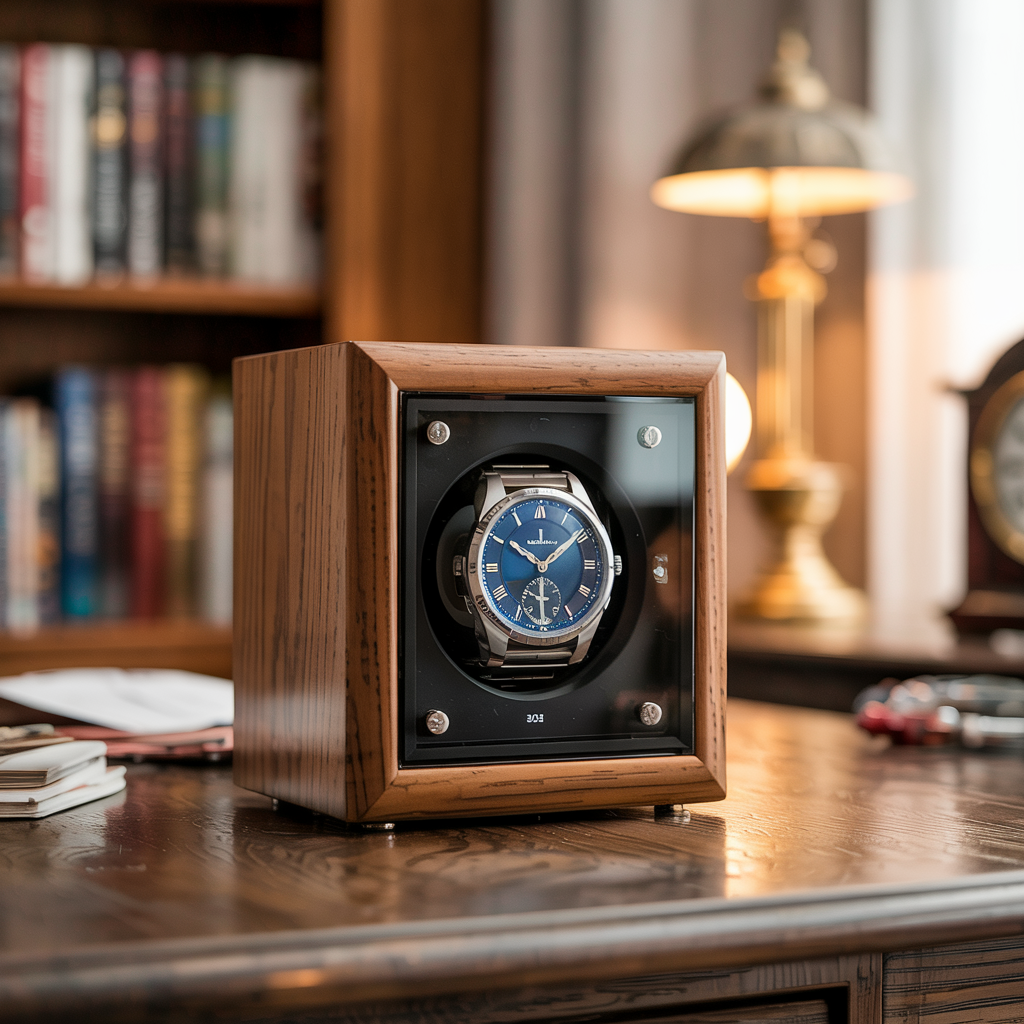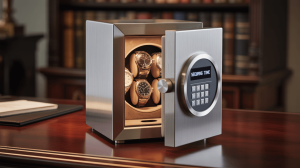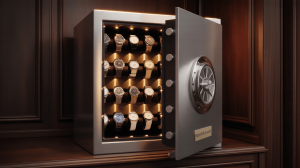The Watch Winder Dilemma
Your self-winding timepiece is a feat of engineering—a delicate dance of rotors and mainsprings that demands thoughtful care. Yet one question divides collectors: *Does constant motion preserve or harm these intricate mechanisms?* The truth might surprise you.
Precision instruments thrive on movement, but unrestrained winding can accelerate wear. The sweet spot? It’s not about frequency—it’s about *strategic maintenance*. Some luxury brands recommend daily rotation, while others suggest periodic intervals. Factors like power reserve, complication type, and even climate play pivotal roles.
Overzealous collectors often commit a cardinal sin: treating winders as permanent cradles. Yet master watchmakers warn—indiscriminate spinning risks lubricant breakdown and premature fatigue. The solution? A tailored approach that respects your piece’s unique heartbeat.
Discover how to strike the perfect equilibrium between motion and rest. Your horological investment deserves nothing less than informed devotion.
2. The Mechanics Behind Motion Preservation
At its core, these devices serve one purpose: replicating the subtle motion of your wrist to keep self-winding mechanisms engaged. They’re not just fancy display cases—they’re precision instruments designed to maintain your timekeeper’s rhythm during periods of inactivity.
Natural Motion, Perfected
The best units simulate human activity through programmable rotation patterns. Rather than constant spinning, they alternate between clockwise, counterclockwise, and rest periods—just like the varied movements of an active wearer. This intelligent cycling prevents overwinding while ensuring optimal lubrication distribution.
Timekeeping Technologies Compared
- Self-winding models harness kinetic energy from wearer movement
- Hand-wound pieces require daily manual intervention
- Battery-powered versions operate independently of motion
Modern preservation units often feature adjustable settings to accommodate different movement types. High-end versions can even be calibrated to match specific luxury brand requirements, making them indispensable for serious collectors.
The engineering behind these devices bridges horology and innovation—offering a smart solution for maintaining mechanical integrity without daily wear. Their value becomes particularly evident when safeguarding complicated pieces with multiple functions that benefit from consistent operation.
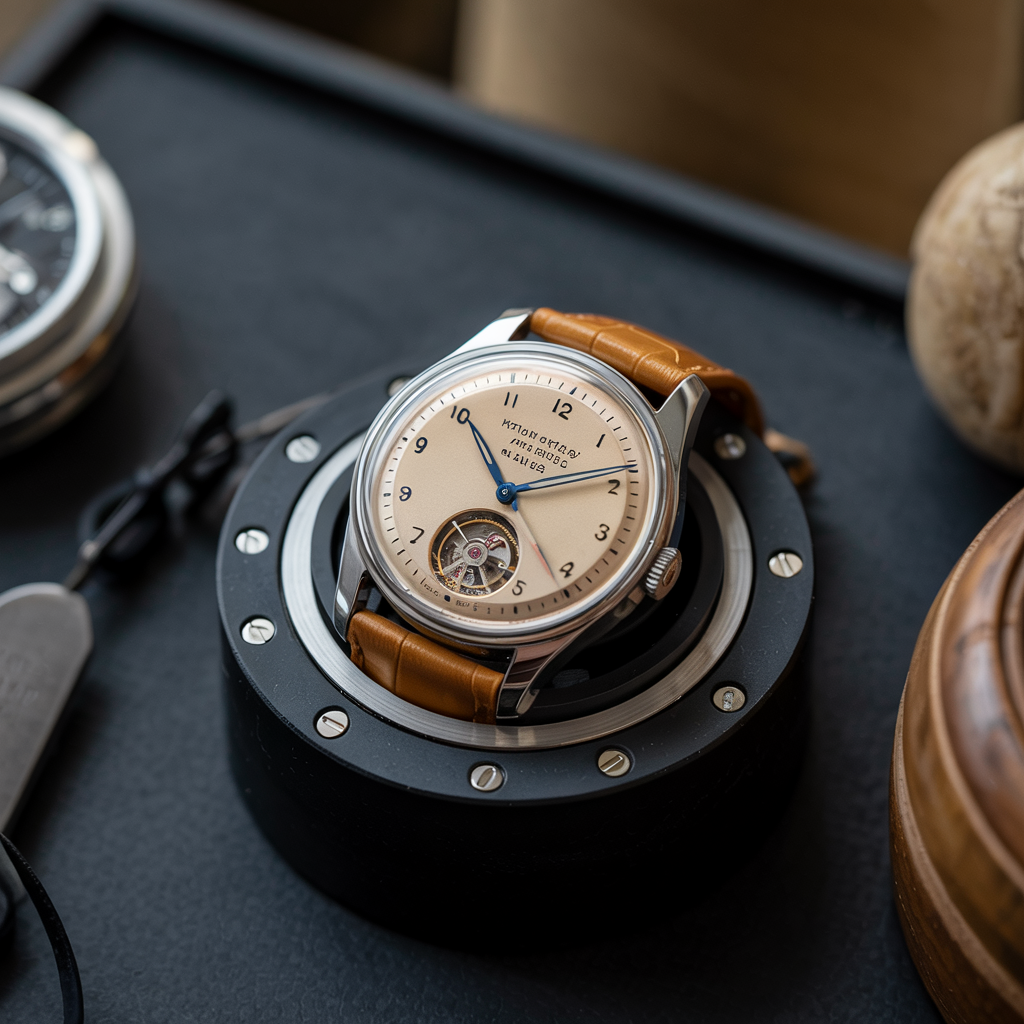
3. The Science of Sustained Precision
Mechanical timekeeping instruments demand more than occasional attention—they thrive on consistent care. Here’s why proper maintenance devices play a crucial role in preserving your investment:
Fluid Dynamics at Work
The microscopic oils inside mechanical movements gradually thicken when stagnant, much like honey left undisturbed. Regular motion prevents this viscous transformation, ensuring smooth gear interaction and reducing metal-on-metal friction that could lead to premature servicing needs.
Instant Readiness, Uncompromised Accuracy
A properly maintained piece eliminates the frustration of resetting after periods of inactivity. More importantly, it maintains optimal isochronism—that critical consistency of timekeeping that separates exceptional chronometers from ordinary tickers.
Longevity Through Motion
Just as athletes maintain peak condition through regular training, mechanical movements preserve their vitality through consistent operation. Periodic winding prevents mainsprings from developing memory, balances from sticking, and complications from seizing—effectively adding years to your instrument’s operational life.
High-end complications particularly benefit from this approach, as their intricate mechanisms contain dozens of additional parts that require regular engagement to prevent deterioration. The difference between occasional and proper maintenance often becomes apparent only during servicing, when wear patterns tell the story of conscientious ownership.
4. Finding Your Timepiece’s Perfect Rhythm
The optimal maintenance schedule isn’t one-size-fits-all—it’s a carefully calibrated balance based on your collection’s unique needs. Consider these guidelines for keeping mechanical movements in peak condition:
The Golden Rule of Engagement
Most automatic mechanisms benefit from 650-900 rotations daily, roughly equivalent to 8 hours of wrist wear. However, continuous operation isn’t necessary—many experts recommend alternating between 2 days of motion and 1 day of rest to prevent excessive wear.
Key Variables That Dictate Frequency
- Power Reserve Capacity:
• 40-hour movements: 12-14 hours daily rotation
• 7+ day reserves: 4-6 hours every other day - Complication Complexity:
• Simple date functions: Standard cycles suffice
• Perpetual calendars: Require uninterrupted motion - Manufacturer Specifications:
• Rolex suggests daily use
• Patek Philippe recommends periodic winding - Environmental Factors:
• Humid climates may require more frequent engagement
• Temperature-controlled environments permit reduced activity
Smart collectors often create custom schedules based on their rotation habits—matching maintenance to actual wear patterns rather than arbitrary timetables. The most sophisticated winders now feature adaptive programming that learns your collection’s unique needs.
5. Mastering Your Maintenance Device’s Settings
Precision timekeeping requires more than just random spinning—it demands scientifically calibrated operation. Let’s decode the critical parameters for optimal performance:
Rotation Frequency Decoded
- Standard mechanical movements thrive at 650-800 turns daily
- Ultra-thin calibers perform best at 500-600 rotations
- High-torque complications may need 900+ revolutions
The Bidirectional Debate
Modern winding systems typically alternate between clockwise and counterclockwise motion because:
- Most contemporary calibers wind efficiently in both directions
- ETA-based movements specifically require dual-direction operation
- Vintage pieces often need unidirectional patterns (check manufacturer specs)
Strategic Pause Cycles
Implementing rest periods mimics natural wear patterns:
- 6-8 hours of activity followed by 4 hours of stillness
- Complete downtime days (especially for watches with 72h+ power reserves)
- Moonphase complications benefit from weekly 12-hour pauses
Advanced units now feature “smart idle” technology that automatically adjusts to your movement’s needs, while traditional winders require manual configuration based on your timekeeper’s technical specifications.
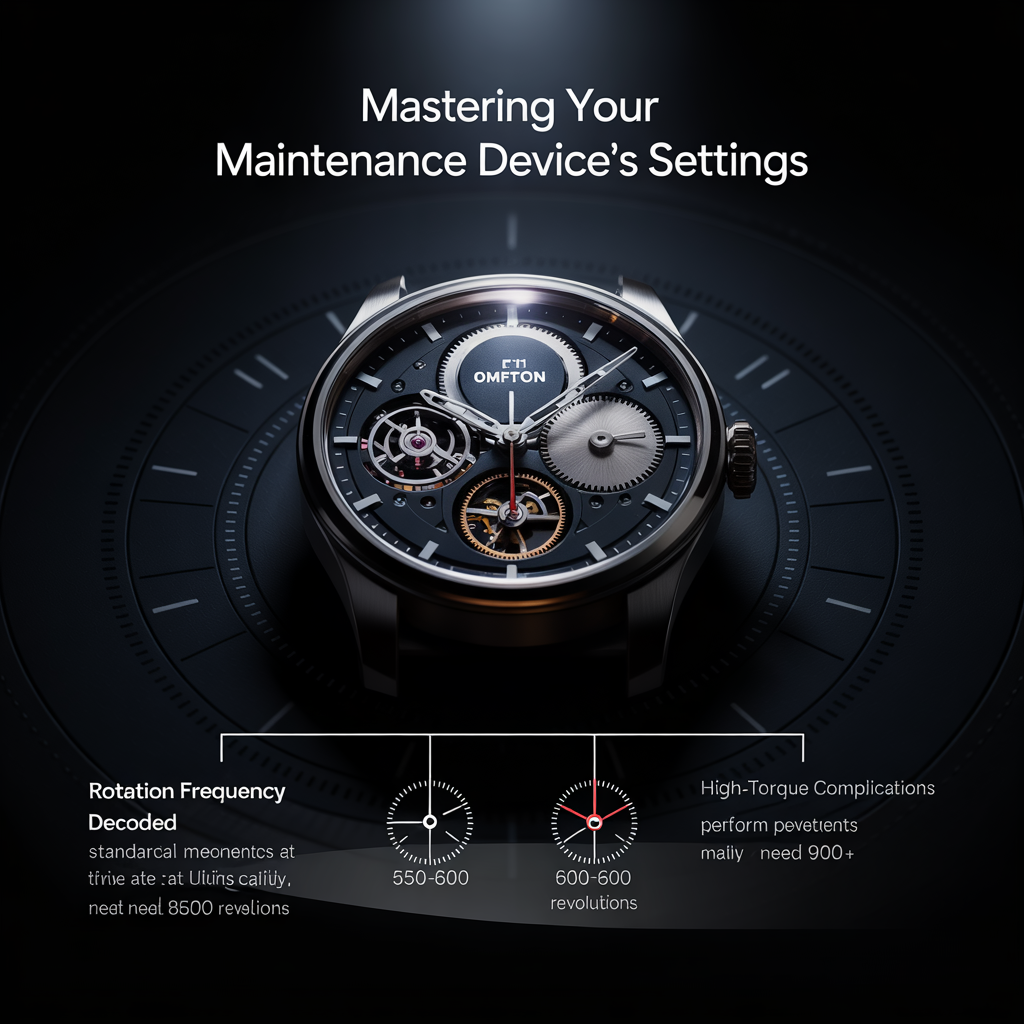
6. The Truth About Excessive Maintenance
The fear of overwinding is one of horology’s most persistent myths—but the reality is more nuanced. Modern self-winding mechanisms incorporate slip-clutch systems that prevent actual overwinding, just as they would during normal wear. However, improper use of maintenance devices can still create unnecessary strain.
Hidden Stress Factors
- Torque Imbalance:
• Low-quality units may rotate with uneven force, stressing bearings
• Vintage pieces without modern shock protection are particularly vulnerable - Lubricant Breakdown:
• Synthetic oils degrade faster under constant motion (2-3 years vs. 5+ years)
• Chronograph complications suffer most due to complex gear trains - Magnetization Risk:
• Cheap motors can emit electromagnetic fields affecting accuracy
• Silicon hairsprings are immune, but most luxury watches still use metal
When Rest Beats Motion
Complicated perpetual calendars actually benefit from occasional stops—their mechanisms reset more cleanly after a full discharge. Similarly, watches with under 30-hour reserves need less frequent engagement than those with 70+ hour power stores.
Smart collectors use maintenance cycles strategically:
- Dress watches: 500 rotations/day, 8-hour rest periods
- Dive watches: 800 rotations bidirectional
- Grand complications: Programmed to match actual wrist motion patterns
The key isn’t avoiding these devices—it’s using them intelligently. High-end Swiss manufacturers now provide brand-specific rotation profiles, proving that when applied correctly, these tools enhance rather than endanger mechanical artistry.
7. Optimizing Your Timepiece Maintenance Routine
Duration Guidelines for Mechanical Movements
- Active rotation cycles should typically last 8-12 hours daily
- Timepieces with power reserves under 42 hours benefit from continuous 14-hour cycles
- For collections in regular rotation, limit winding sessions to 2-3 consecutive days before resting
Short-Term Storage Solutions (1-4 weeks)
- Ideal for watches worn monthly or seasonally
- Maintains lubrication distribution without excessive wear
- Recommended settings:
• 650-800 turns per day
• Bidirectional rotation
• 6-hour rest periods every 18 hours
Extended Storage Considerations (3+ months)
- For vintage or fragile mechanisms: manual winding monthly preferred
- Modern automatics: program maintenance unit for intermittent cycles (3 days on/4 days off)
- Critical steps before long-term storage:
- Fully wind the mainspring
- Engage all complications
- Place in climate-controlled environment
Special Cases Requiring Alternative Approaches
- Chronographs: Run the stopwatch function monthly if not on maintenance unit
- Minute repeaters: Wind completely every 45 days regardless of storage method
- Silicon hairspring models: Can tolerate longer static periods without lubrication issues
Professional collectors recommend matching maintenance schedules to actual usage patterns rather than arbitrary timelines. The most sophisticated storage systems now feature adaptive programming that learns your wearing habits and adjusts accordingly.
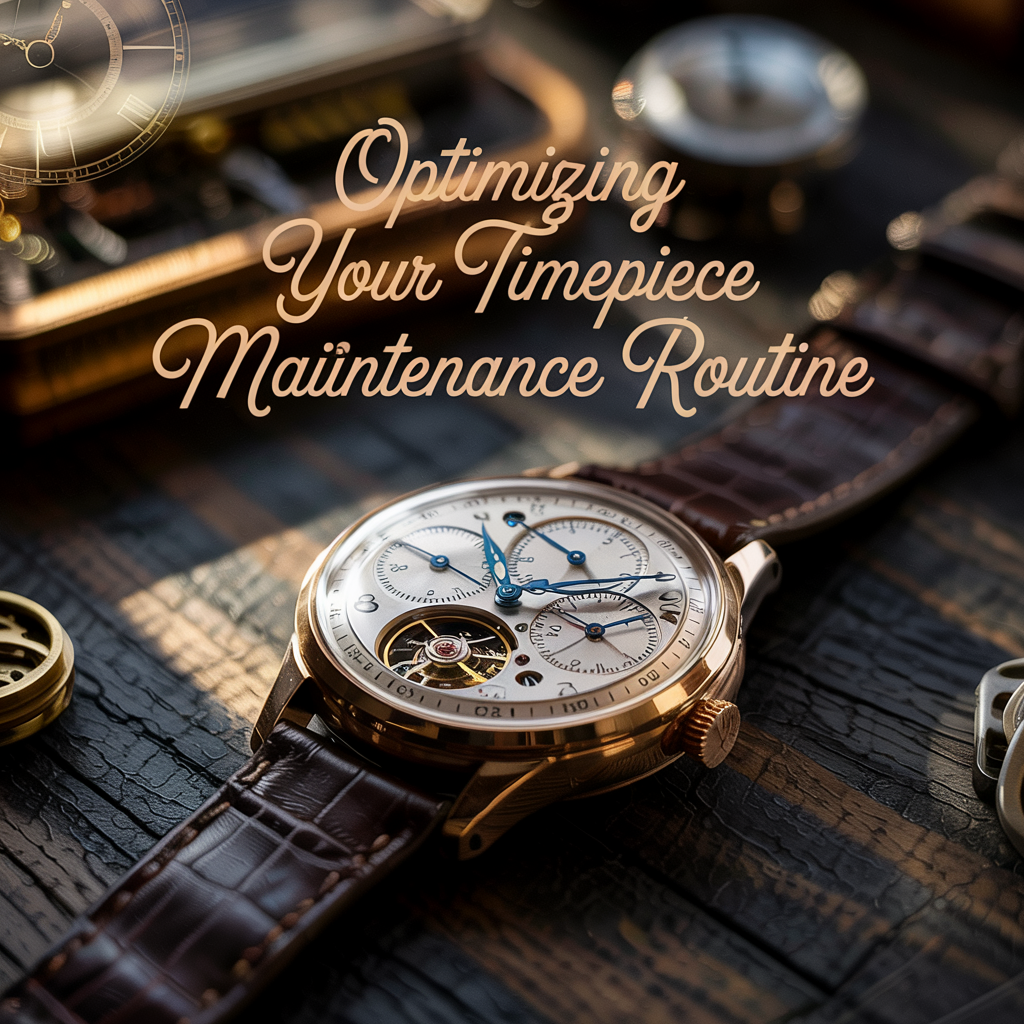
8. The Great Horological Debate: Automated vs. Hands-On Care
Automated Maintenance Advantages
- Maintains consistent accuracy for watches in rotation
- Preserves lubrication distribution in complex movements
- Ideal for owners with multiple automatic timepieces
- Eliminates need for frequent resetting of perpetual calendars
Manual Intervention Benefits
- Allows direct monitoring of mainspring tension
- Reduces unnecessary wear on rotor mechanisms
- Preferred for vintage pieces with delicate components
- More cost-effective solution for single-watch owners
When Traditional Winding Prevails
- For timepieces worn less than weekly
- During travel when maintenance units aren’t practical
- With historical models lacking modern shock protection
- For watches exhibiting rotor noise or resistance
Hybrid Approach for Discerning Collectors
- Use automated systems for regularly worn pieces
- Reserve manual care for special occasion watches
- Combine methods based on movement requirements:
*Modern COSC-certified: Daily automated cycles
*Pre-1980s movements: Weekly hand-winding
*High-beat calibers: Reduced rotation periods
Horological experts suggest matching your approach to both your collection’s composition and personal wearing habits. The most sophisticated collectors maintain detailed logs tracking each timepiece’s performance under different maintenance regimens.
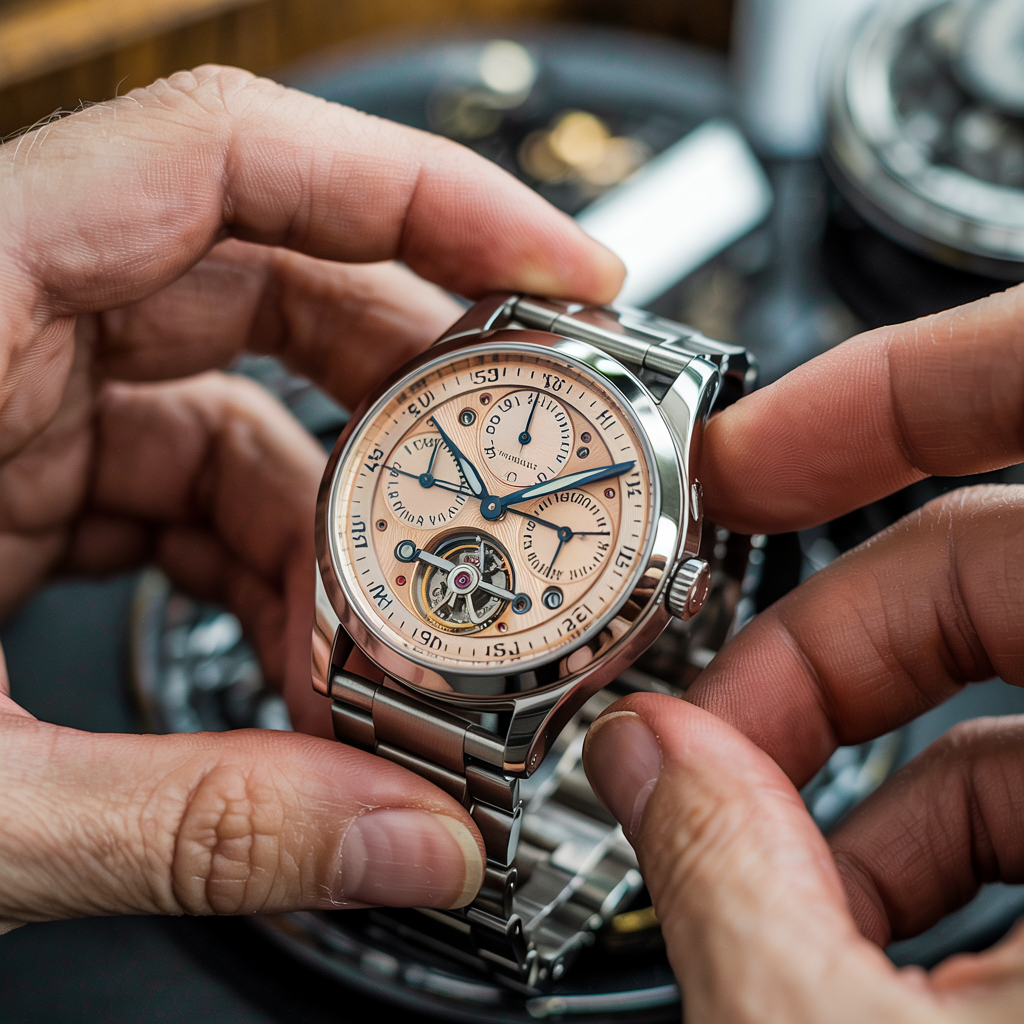
9. Tailoring Care for Exceptional Timepieces
Mastering Complex Mechanism Maintenance
- Perpetual calendars: Require uninterrupted motion (900+ TPD)
- Tourbillons: Benefit from gentle, continuous rotation
- Minute repeaters: Need weekly full winding cycles
- Split-second chronographs: Demand specialized bidirectional programs
Vintage Horology Preservation
- Pre-1970s movements:
• Limited to 500-600 daily rotations
• Mandatory rest days (3:1 ratio)
• Unidirectional patterns often required - Porcelain dial watches:
• Vibration-sensitive – use low-speed units
• Climate-controlled environment essential - Historical pieces with fragile mainsprings:
• Manual winding preferred
• 30% power reserve ideal for storage
Extended Power Reserve Considerations
- 7-day movements: Thrive on intermittent cycles (4h on/8h off)
- 31-day exceptional pieces: Weekly full windings sufficient
- Mainspring tension management critical for:
*Lange 31 (31-day reserve)
*Panerai 8 Days
*Hublot MP-11 (14-day)
Material-Specific Protocols
- Silicon escapements: More tolerant of varied schedules
- Bronze cases: Require climate-controlled rest periods
- Sapphire crystal tourbillons: Need ultra-precise rotation calibration
Collectors should consult manufacturer archives for historical models, as many Swiss houses provide vintage-specific guidelines. Contemporary complicated pieces often ship with recommended maintenance profiles – ignore these at your movement’s peril.
10. Selecting Your Ideal Timepiece Maintenance System
Unit Capacity Considerations
- Solo units: Perfect for owners of one premium automatic, preserving resale value through dedicated care
- Multi-slot systems: Essential for collectors with 3+ pieces, with premium options offering individual programming per slot
Investment Spectrum Analysis
Entry-level ($50-$200):
- Basic rotation functions
- Limited customization
- Ideal for occasional wear
Premium tier ($500+):
- Handcrafted wood/leather casings
- Ultra-precise Japanese motors
- Advanced memory functions
Critical Performance Attributes
- Acoustic profile: <25dB operation for bedroom use (Mabuchi motors excel here)
- Energy solutions: Dual AC/battery capability for travel versatility
- Movement calibration: 650-950 TPD range with bidirectional options
- Safety mechanisms: Voltage regulators and surge protection
Specialized Solutions
- Travel models with shock-absorbent casing
- Climate-controlled units for tropical regions
- Smart-connected systems with app monitoring
Pro Tip: Luxury manufacturers like Buben & Zörweg offer archival-grade units matching high-end timepiece aesthetics, while Wolf provides reliable mid-range options with excellent service networks. Always verify compatibility with your specific movement requirements before purchasing.
11. Pitfalls That Compromise Timepiece Health
Rotation Rate Blunders
- Setting 1200+ TPD for delicate dress watches
- Using identical settings for all movements
- Ignoring manufacturer’s recommended cycles
Directional Oversights
- Assuming all modern calibers are bidirectional
- Neglecting vintage piece requirements
- Failing to check technical documentation
Maintenance Neglect Consequences
- Dust accumulation jamming rotor mechanisms
- Unlubricated bearings causing uneven rotation
- Power surges damaging sensitive electronics
Additional Critical Errors
- Storing multiple pieces in single compartments (scratch risk)
- Placing units in direct sunlight (temperature fluctuations)
- Using generic power adapters (voltage inconsistencies)
Preventative Measures
- Quarterly deep cleaning with microfiber cloths
- Annual professional motor servicing
- Monthly performance verification checks
Collectors often discover these mistakes only during costly servicing. One Patek Philippe owner learned the hard way when improper settings accelerated lubricant breakdown in their annual calendar—a $1,200 lesson in precision care.
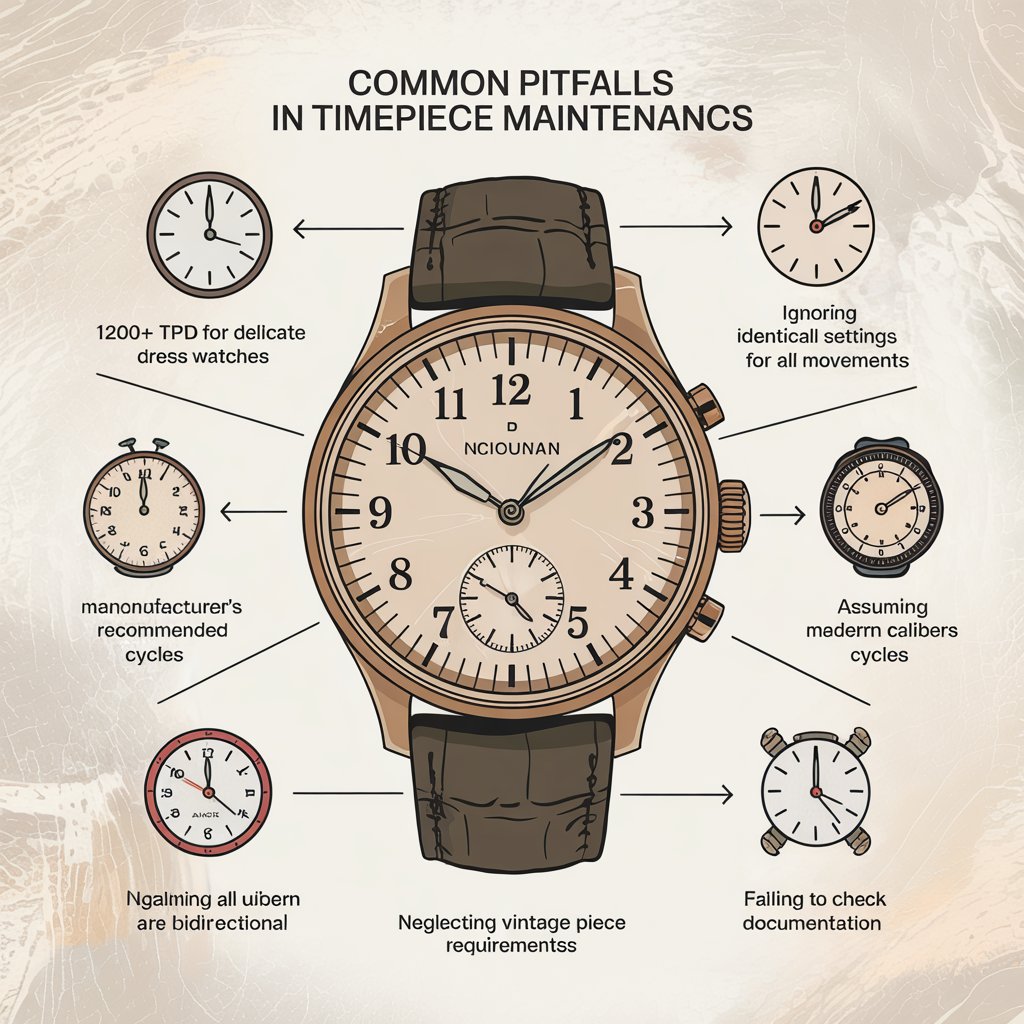
12. Wisdom From the Horological Masters
Brand-Specific Guidance
- Rolex: Recommends daily rotation for all Oyster models
- Patek Philippe: Advises monthly winding for complications
- Omega: Suggests 800 TPD maximum for Co-Axial movements
- A. Lange & Söhne: Requires complete rest every 7 days
Repair Specialist Warnings
- “The worst damage comes from cheap units with inconsistent RPMs” – Swiss-trained master watchmaker
- “Vintage movements should never be left on continuous rotation” – Heritage timepiece restorer
- “Modern lubricants last longer, but proper cycling remains critical” – Chronometer service technician
Collector Community Insights
- Top enthusiasts program units to match actual wearing schedules
- Serious collectors maintain separate units for different movement types
- Forum consensus: 30% power reserve is ideal for storage periods
Surprising Industry Revelations
- Several haute horlogerie brands secretly produce their own maintenance units
- Geneva Seal-certified pieces undergo winder testing during certification
- Independent watchmakers increasingly recommend periodic complete unwinding
One Audemars Piguet service center reported that 60% of premature servicing comes from improper maintenance device use—not from normal wear. The savviest owners keep detailed logs of rotation schedules alongside accuracy measurements.
12. Wisdom From the Horological Masters
Brand-Specific Guidance
- Rolex: Recommends daily rotation for all Oyster models
- Patek Philippe: Advises monthly winding for complications
- Omega: Suggests 800 TPD maximum for Co-Axial movements
- A. Lange & Söhne: Requires complete rest every 7 days
Repair Specialist Warnings
- “The worst damage comes from cheap units with inconsistent RPMs” – Swiss-trained master watchmaker
- “Vintage movements should never be left on continuous rotation” – Heritage timepiece restorer
- “Modern lubricants last longer, but proper cycling remains critical” – Chronometer service technician
Collector Community Insights
- Top enthusiasts program units to match actual wearing schedules
- Serious collectors maintain separate units for different movement types
- Forum consensus: 30% power reserve is ideal for storage periods
Surprising Industry Revelations
- Several haute horlogerie brands secretly produce their own maintenance units
- Geneva Seal-certified pieces undergo winder testing during certification
- Independent watchmakers increasingly recommend periodic complete unwinding
One Audemars Piguet service center reported that 60% of premature servicing comes from improper maintenance device use—not from normal wear. The savviest owners keep detailed logs of rotation schedules alongside accuracy measurements.
13. Answering Your Top Timepiece Maintenance Questions
Potential Damage Concerns
While quality units won’t harm modern mechanisms, risks include:
- Low-grade models causing magnetized hairsprings
- Excessive rotations accelerating lubricant breakdown
- Poorly cushioned units creating vibration damage
Quartz Model Considerations
Battery-powered pieces:
- Gain nothing from rotation devices
- May drain batteries faster in active units
- Exception: Autoquartz hybrids (like Seiko Kinetic)
Continuous Operation Realities
24/7 rotation is:
Recommended for perpetual calendars
Overkill for basic date models
Conditional for vintage pieces
Additional Common Queries
- “Can I store multiple watches together?”
Only with individual compartments to prevent contact - “Do smartwatches need this?”
Never – charging stands serve different purposes - “How long can I safely stop rotation?”
Most automatics tolerate 2-3 weeks of stillness
Watchmakers report these questions account for 40% of servicing consultations. One collector preserved their 1950s chronograph by learning these answers before using any maintenance device.
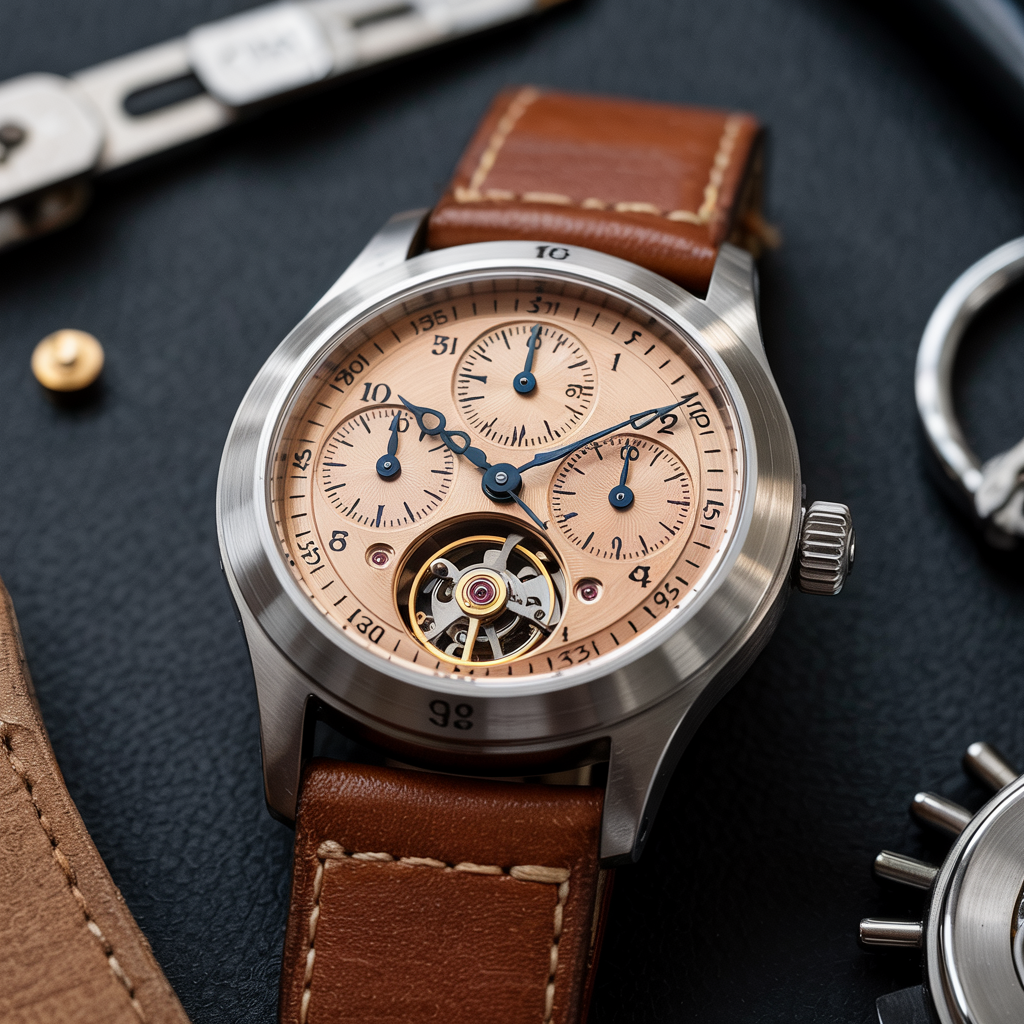
14. The Goldilocks Principle: Perfect Maintenance Made Simple
Universal Baseline for Modern Automatics
- Daily rotation: 650-800 turns (bidirectional)
- Activity cycle: 8 hours on, 4 hours rest
- Weekly full discharge for lubrication redistribution
Customization Framework
For the 3-Watch Collector:
- Daily wearer: Skip maintenance device
- Weekend piece: 500 TPD weekdays
- Dress watch: Manual wind before events
For the 10+ Piece Enthusiast:
- Group by movement type (ETA, in-house, etc.)
- Assign dedicated units per category
- Program based on power reserve:
• <42h: Daily cycles
• 72h+: Intermittent rotation
Troubleshooting Quick Reference
- Accuracy drifting? Reduce TPD by 15%
- Rotor noise? Implement mandatory rest days
- Complication hesitation? Increase activity periods
Horologists agree: The perfect routine balances motion and rest like a symphony conductor. One Geneva watchmaker’s collection maintains ±1 second accuracy across 37 pieces using this disciplined approach—proof that intelligent maintenance trumps constant motion.

15. Mastering the Art of Mechanical Preservation
Essential Insights to Remember
- Precision instruments thrive on intentional rather than constant motion
- Your timekeeper’s needs vary by:
• Movement complexity
• Age and heritage
• Personal wearing habits - Quality maintenance devices should serve your collection—not dictate its care
The Horologist’s Mantra
“Better slightly under-wound than perpetually overworked” applies equally to:
- Vintage dress watches needing gentle care
- Modern tool watches built for endurance
- Grand complications demanding scientific precision
Your Personalized Path Forward
Start with manufacturer guidelines, then adjust through:
- Monthly accuracy tracking
- Visual lubrication checks during servicing
- Observing rotor behavior changes
One collector transformed their 1950s Rolex’s +25s/day variance to COSC standards simply by finding its ideal 650 TPD rhythm. Your perfect balance exists—it just requires attentive tuning to discover.

